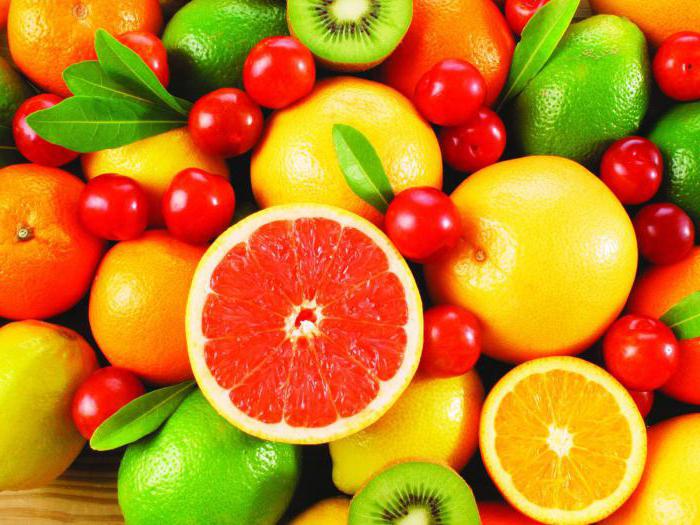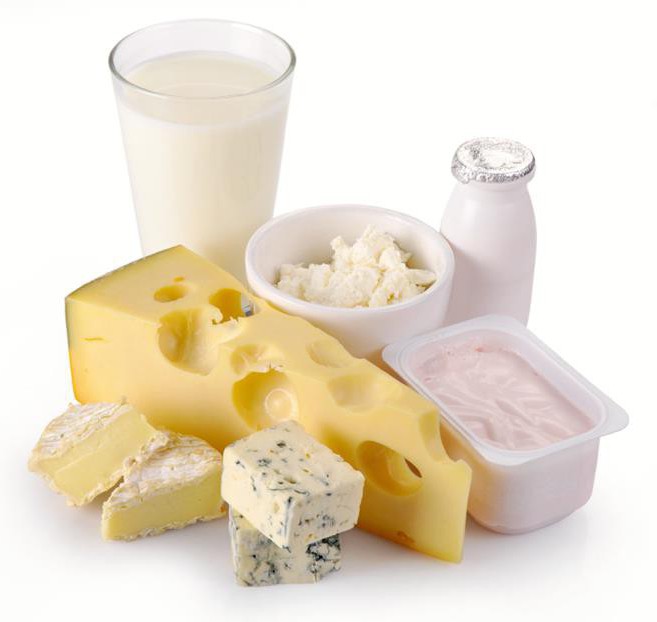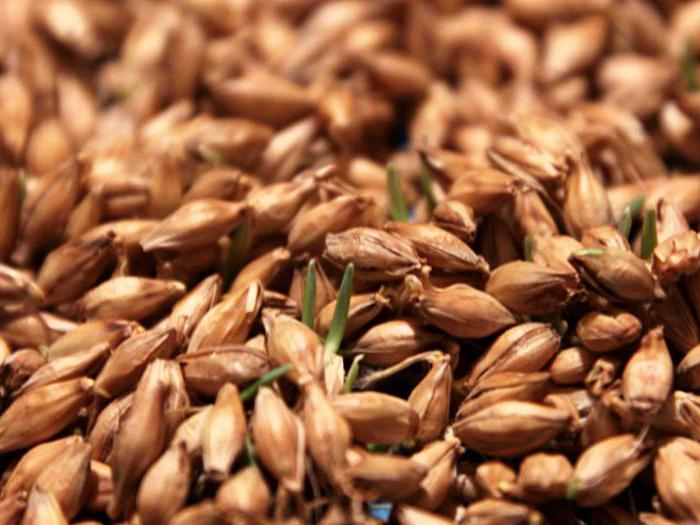The chemical properties of the cells that make up living organisms depend primarily on the number of carbon atoms constituting up to 50% of the dry mass. Carbon atoms are found in the main organic substances: proteins, nucleic acids, lipids and carbohydrates. The last group includes carbon and water compounds corresponding to the formula (CH 2 O) n , where n is equal to or greater than three. In addition to carbon, hydrogen and oxygen, the composition of the molecules can include atoms of phosphorus, nitrogen, sulfur. In this article we will study the role of carbohydrates in the human body, as well as the features of their structure, properties and functions.
Classification
This group of compounds in biochemistry is divided into three classes: simple sugars (monosaccharides), polymeric compounds with a glycosidic bond - oligosaccharides and biopolymers with a high molecular weight - polysaccharides. Substances of the above classes are found in various types of cells. For example, starch and glucose are found in plant structures, glycogen in human hepatocytes and cell walls of fungi, chitin in the outer skeleton of arthropods. All of the above substances are carbohydrates. The role of carbohydrates in the body is universal. They are the main supplier of energy for the vital manifestations of plant cells, bacteria, animals and humans.
Monosaccharides
They have the general formula C n H 2 n O n and are divided into groups depending on the number of carbon atoms in the molecule: trioses, tetroses, pentoses, and so on. In the composition of cellular organelles and the cytoplasm, simple sugars have two spatial configurations: cyclic and linear. In the first case, carbon atoms are connected to each other by covalent sigma bonds and form closed cycles, in the second case, the carbon skeleton is not closed and may have branches. To determine the role of carbohydrates in the body, consider the most common of them - pentoses and hexoses.
Isomers: glucose and fructose
They have the same molecular formula C 6 H 12 O 6 , but different structural types of molecules. Earlier, we called the main role of carbohydrates in a living organism - energy. The above substances are cleaved by the cell. As a result, energy is released (17.6 kJ from one gram of glucose). In addition, 36 ATP molecules are synthesized. The breakdown of glucose occurs on the membranes (cristae) of mitochondria and is a chain of enzymatic reactions - the Krebs cycle. It is the most important link in the dissimilation that occurs in all cells of heterotrophic eukaryotic organisms without exception.

Glucose is also formed in mammalian myocytes due to the breakdown of glycogen stores in muscle tissue. In the future, it is used as an easily disintegrating substance, since providing cells with energy is the main role of carbohydrates in the body. Plants are phototrophs and independently form glucose during photosynthesis. These reactions are called the Calvin cycle. The starting material is carbon dioxide, and the acceptor is ribolezodiphosphate. Glucose synthesis occurs in the matrix of chloroplasts. Fructose, having the same molecular formula as glucose, contains a functional group of ketones in the molecule. It is sweeter than glucose and is found in honey, as well as juice of berries and fruits. Thus, the biological role of carbohydrates in the body is primarily to use them as a quick source of energy.
The role of pentosis in heredity
Let us dwell on another group of monosaccharides - ribose and deoxyribose. Their uniqueness lies in the fact that they are part of polymers - nucleic acids. For all organisms, including non-cellular life forms, DNA and RNA are the main carriers of hereditary information. Ribose enters RNA molecules, and deoxyribose is found in DNA nucleotides. Therefore, the biological role of carbohydrates in the human body is that they participate in the formation of units of heredity - genes and chromosomes.
Examples of pentoses that contain an aldehyde group and are common in the plant world are xylose (found in stems and seeds), alpha-arabinose (found in gum of stone fruit trees). Thus, the distribution and biological role of carbohydrates in the body of higher plants is quite large.
What are oligosaccharides
If the residues of monosaccharide molecules, for example, such as glucose or fructose, are linked by covalent bonds, then oligosaccharides - polymeric carbohydrates - are formed. The role of carbohydrates in the body of both plants and animals is diverse. This is especially true for disaccharides. The most common among them are sucrose, lactose, maltose and trehalose. So, sucrose, otherwise called cane or beet sugar, is found in plants in the form of a solution and is stored in their root crops or stems. As a result of hydrolysis, glucose and fructose molecules are formed. Milk sugar, lactose, is of animal origin. Some people have intolerance to this substance associated with hyposecretion of the lactase enzyme, which breaks down milk sugar into galactose and glucose. The role of carbohydrates in the body is diverse. For example, trehalose disaccharide, consisting of two glucose residues, is part of the hemolymph of crustaceans, spiders, insects. It also occurs in the cells of fungi and some algae.
Another disaccharide - maltose, or malt sugar, is found in rye or barley kernels when they germinate, is a molecule consisting of two glucose residues. It is formed as a result of the breakdown of plant or animal starch. In the small intestines of humans and mammals, maltose is broken down by the enzyme, maltase. In its absence, a pathology arises in pancreatic juice due to intolerance to glycogen or plant starch in food products. In this case, they use a special diet and add the enzyme to the diet.
Complex carbohydrates in nature
They are very widespread, especially in the plant world, are biopolymers and have a large molecular weight. For example, in starch it is equal to 800,000, and in cellulose - 1,600,000. Polysaccharides differ in the composition of monomers, degree of polymerization, and chain length. Unlike simple sugars and oligosaccharides, which dissolve well in water and have a sweet taste, polysaccharides are hydrophobic and tasteless. Consider the role of carbohydrates in the human body using the example of glycogen - animal starch. It is synthesized from glucose and is reserved in hepatocytes and skeletal muscle cells, where its content is two times higher than in the liver. Subcutaneous fatty tissue, neurocytes and macrophages are also capable of glycogen formation. Another polysaccharide, plant starch, is a product of photosynthesis and is formed in green plastids.

From the very beginning of human civilization, the main suppliers of starch were valuable crops: rice, potatoes, and corn. They are still the basis of the diet of the vast majority of the inhabitants of the Earth. That is why carbohydrates are so valuable. The role of carbohydrates in the body consists, as we see, in their use as energy-intensive and rapidly assimilable organic substances.
There is a group of polysaccharides whose monomers are hyaluronic acid residues. They are called pectins and are structural substances of plant cells. The peel of apples and beet pulp are especially rich in them. Cellular substances of pectin regulate intracellular pressure - turgor. In the confectionery industry, they are used as jelly-forming substances and thickeners in the production of high-quality varieties of marshmallows and marmalade. In dietary nutrition, they are used as biologically active substances that well remove toxins from the large intestine.
What are glycolipids
This is an interesting group of complex compounds of carbohydrates and fats found in nervous tissue. It consists of the brain and spinal cord of mammals. Glycolipids are also found in cell membranes. For example, in bacteria, they participate in intercellular contacts. Some of these compounds are antigens (substances that detect blood groups of the Landsteiner AB0 system). In the cells of animals, plants and humans, in addition to glycolipids, there are also independent fat molecules. They perform primarily an energy function. When one gram of fat is broken down, 38.9 kJ of energy is released. Lipids are also characterized by structural function (included in the composition of cell membranes). Thus, these functions are performed by carbohydrates and fats. Their role in the body is extremely large.
The role of carbohydrates and lipids in the body
In human and animal cells, mutual transformations of polysaccharides and fats resulting from metabolism can be observed. Dietary scientists have found that excessive consumption of starchy foods leads to the accumulation of fat. If a person has disorders of the pancreas in terms of secreting amylase or leads a sedentary lifestyle, his weight can greatly increase. It is worth remembering that carbohydrate-rich foods are broken down mainly in the duodenum to glucose. It is absorbed by the capillaries of the villi of the small intestine and is deposited in the liver and muscles in the form of glycogen. The more intense the metabolism in the body, the more actively it is broken down to glucose. Then it is used by cells as the main energy material. This information answers the question of what role carbohydrates play in the human body.
The value of glycoproteins
Compounds of this group of substances are represented by a carbohydrate + protein complex. They are also called glycoconjugates. These are antibodies, hormones, membrane structures. The latest biochemical studies have established: if glycoproteins begin to change their native (natural) structure, this leads to the development of such complex diseases as asthma, rheumatoid arthritis, and cancer. The role of glycoconjugates in cell metabolism is great. So, interferons inhibit the reproduction of viruses, immunoglobulins protect the body from pathogenic agents. Blood proteins also belong to this group of substances. They provide protective and buffering properties. All of the above functions are confirmed by the fact that the physiological role of carbohydrates in the body is diverse and extremely important.
Where and how are carbohydrates formed?
The main suppliers of simple and complex sugars are green plants: algae, higher spore, gymnosperms and flowering. All of them contain chlorophyll pigment in the cells. It is part of thylakoids - chloroplast structures. Russian scientist K. A. Timiryazev studied the process of photosynthesis, as a result of which carbohydrates are formed. The role of carbohydrates in the body of a plant is the accumulation of starch in fruits, seeds and bulbs, that is, in vegetative organs. The mechanism of photosynthesis is quite complex and consists of a series of enzymatic reactions occurring both in the light and in the dark. Glucose is synthesized from carbon dioxide by enzymes. Heterotrophic organisms use green plants as a source of food and energy. Thus, it is plants that are the first link in all trophic chains and are called producers.

In the cells of heterotrophic organisms, carbohydrates are synthesized on the channels of the smooth (agranular) endoplasmic reticulum. Then they are used as energy and building material. In plant cells, carbohydrates are additionally formed in the Golgi complex, and then go on to form a cellulose cell wall. During digestion of vertebrates, carbohydrate-rich compounds are partially broken down in the mouth and stomach. The main reactions of dissimilation occur in the duodenum. Pancreatic juice containing the amylase enzyme that breaks down starch to glucose is secreted into it. As already mentioned, glucose is absorbed into the bloodstream in the small intestine and spreads to all cells. Here it is used as a source of energy and structural substance. This explains what role carbohydrates play in the body.
Submembrane complexes of heterotrophic cells
They are characteristic of animals and mushrooms. The chemical composition and molecular organization of these structures are represented by compounds such as lipids, proteins and carbohydrates. The role of carbohydrates in the body is participation in energy metabolism and membrane building. In human and animal cells, there is a special structural component called glycocalyx. This thin surface layer consists of glycolipids and glycoproteins bound to the cytoplasmic membrane. It provides a direct connection of cells with the environment. Here, there is a perception of irritation and extracellular digestion. Due to their carbohydrate membrane, cells adhere to each other, forming tissues. This phenomenon is called adhesion. We also add that the “tails” of carbohydrate molecules are located above the surface of the cell and directed into the interstitial fluid.
Another group of heterotrophic organisms - fungi, also has a surface apparatus called the cell wall. It includes complex sugars - chitin, glycogen. Some types of mushrooms also contain soluble carbohydrates, such as trehalose, called mushroom sugar.
In unicellular animals, such as ciliates, the surface layer, the pellicle, also contains complexes of oligosaccharides with proteins and lipids. In some protozoa, the pellicle is quite thin and does not interfere with a change in body shape. And for others, it thickens and becomes strong, like a shell, performing a protective function.
Plant cell wall
It also contains a large amount of carbohydrates, especially cellulose, collected in bundles of fibers. These structures form a framework immersed in a colloidal matrix. It consists mainly of oligo- and polysaccharides. The cell walls of plant cells can lignify. In this case, the gaps between the pulp bundles are filled with another carbohydrate - lignin. It enhances the supporting functions of the cell membrane. Often, especially in perennial woody plants, the outer layer, consisting of cellulose, is covered with a fat-like substance - suberin. It prevents water from entering the plant tissue, so the underlying cells die quickly and become covered with a layer of cork.
Summarizing the above, we see that carbohydrates and fats are closely interconnected in the cell wall of plants. It is difficult to underestimate their role in the body of phototrophs, since glycolipid complexes provide support and protective functions. We study the variety of carbohydrates characteristic of the organisms of the kingdom of Drobyanka. It includes prokaryotes, in particular bacteria. Their cell wall contains carbohydrate - murein. Bacteria are divided into gram-positive and gram-negative, depending on the structure of the surface apparatus.
The structure of the second group is more complex. These bacteria have two layers: plastic and rigid. The first contains mucopolysaccharides, for example murein. Its molecules look like large mesh structures that form a capsule around a bacterial cell. The second layer consists of peptidoglycan - a compound of polysaccharides and proteins.
Cell wall lipopolysaccharides allow bacteria to firmly adhere to various substrates, such as tooth enamel or the membrane of eukaryotic cells. In addition, glycolipids promote the adhesion of bacterial cells to each other. In this way, for example, chains of streptococci, clusters of staphylococci are formed, moreover, some types of prokaryotes have an additional mucous membrane - peplos. It contains polysaccharides and is easily destroyed by the action of hard radiation or in contact with certain chemicals, such as antibiotics.